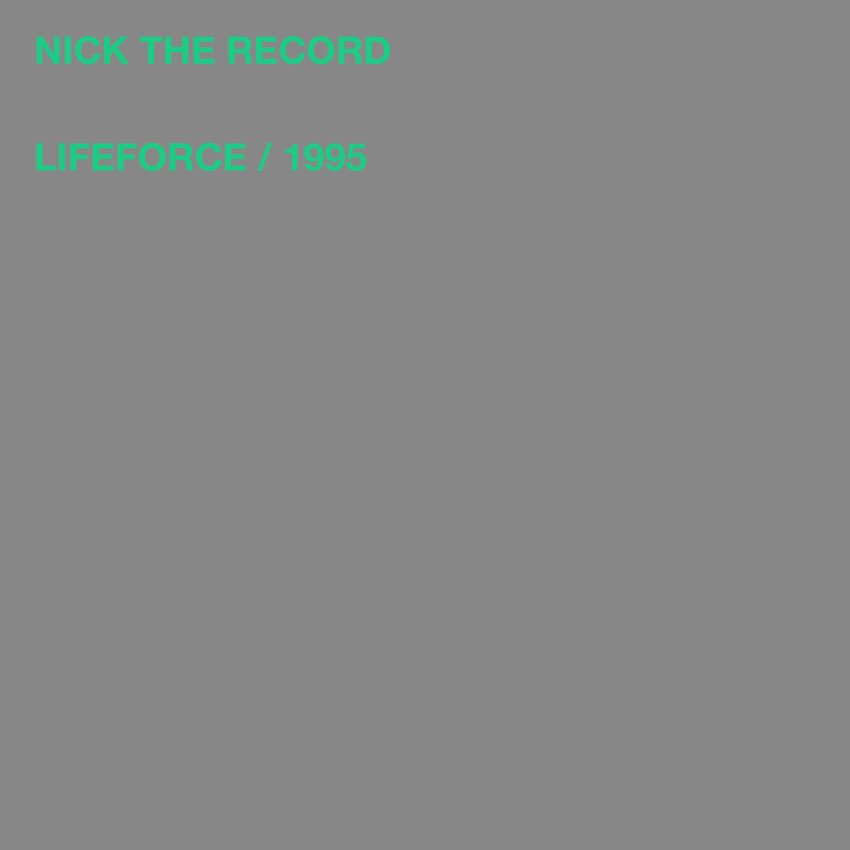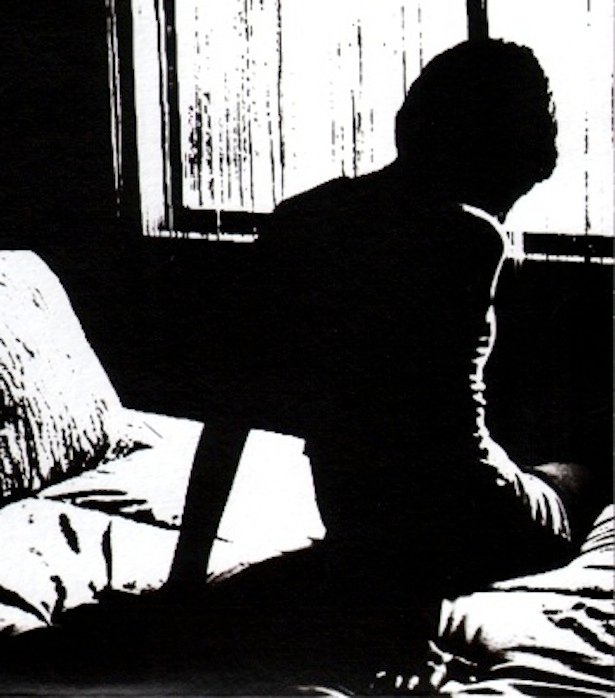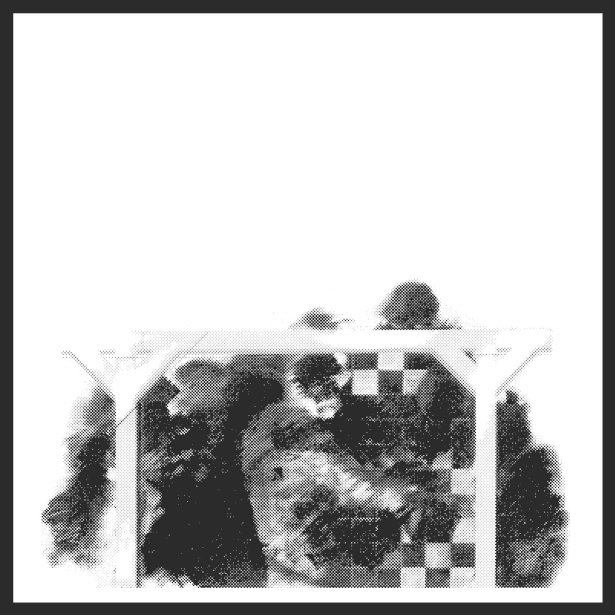Nick The Record
A Lifeforce Story
Nick the Record is a very established and respected record dealer based in the UK. He has been the go to guy for rare music for many many years now. He’s also a fine fine DJ playing at various parties in the UK for over twenty years now but this story is about Lifeforce – a Japanese party that Nick was the resident DJ at for nearly twenty years. In his own words Nick tells the story of his involvement in Lifeforce as well as giving us a mix from ’95 that gives a feel for what was happening there then. Over to Nick…
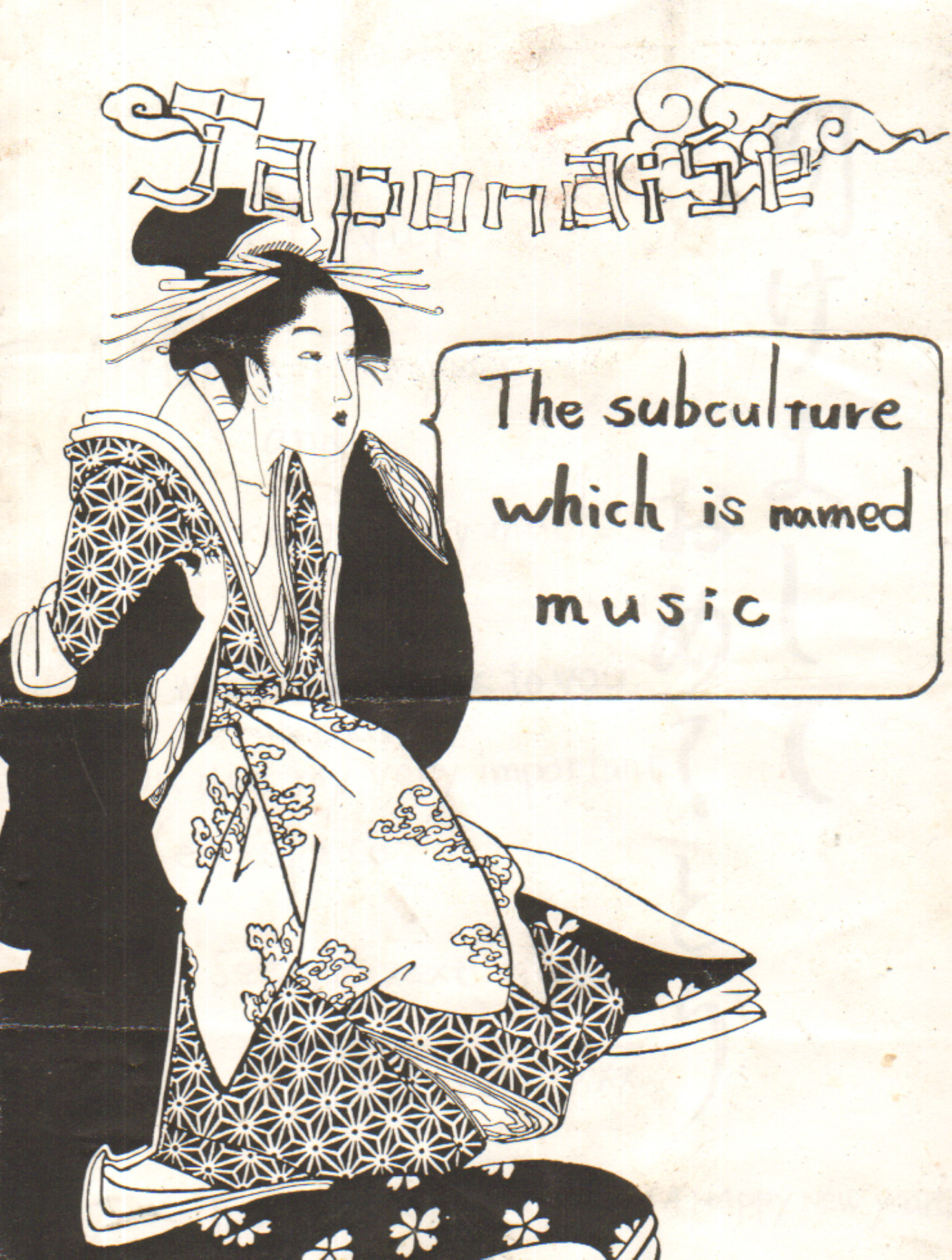
If you take a look at the listings for Japan during summer you’ll see that much like the UK & Europe there are outdoor parties or small festivals every weekend. Back in September 1993 when I arrived in Japan for the first time it was a very different story. I played records at the very first open air Rave/Party in Japan. I shared a photo online recently of a much younger, hairier me & one of the organizers mentioned that this was the first ‘Rave’ in Japan so I thought this is a story that ought to be shared.
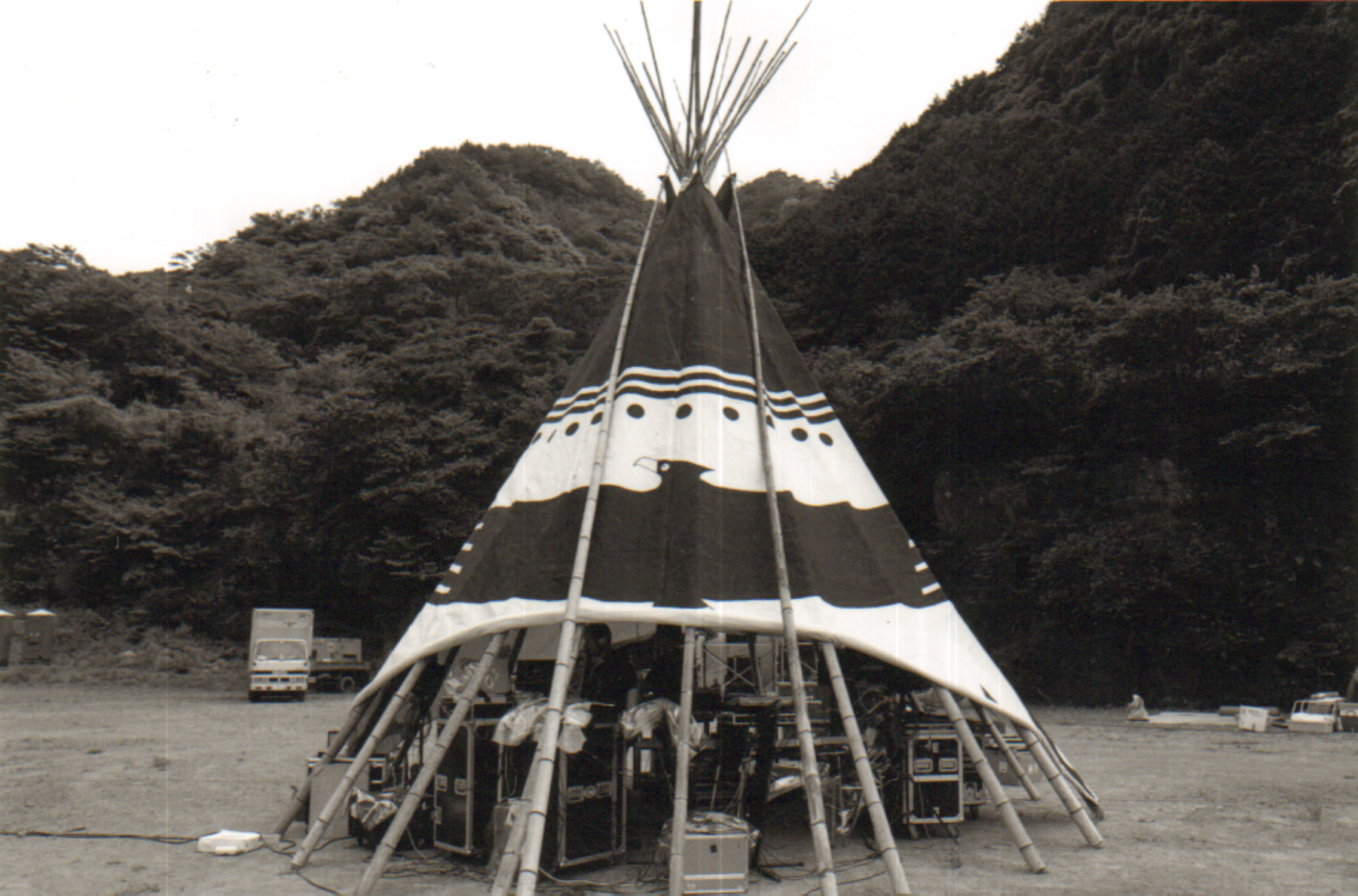
It was the last night of a festival in the mountains of Nagano at a ski resort which was lacking snow as it was a sticky September night. As I played a soundtrack of Acid & House I peered through the front of the teepee at the scattering of Hippies and Dead Heads who danced & swayed and occasionally looked bemused. DJ’s and dance music was as new to most of them as Japan was to me but they seemed to like it and it was the start of something special. I had planned to go travelling around South America right after this first trip but the organizers really wanted to get something building and asked me to come back three months later. That was 21 years ago and, until a couple of years back, I flew back and played at Lifeforce pretty much every three months.
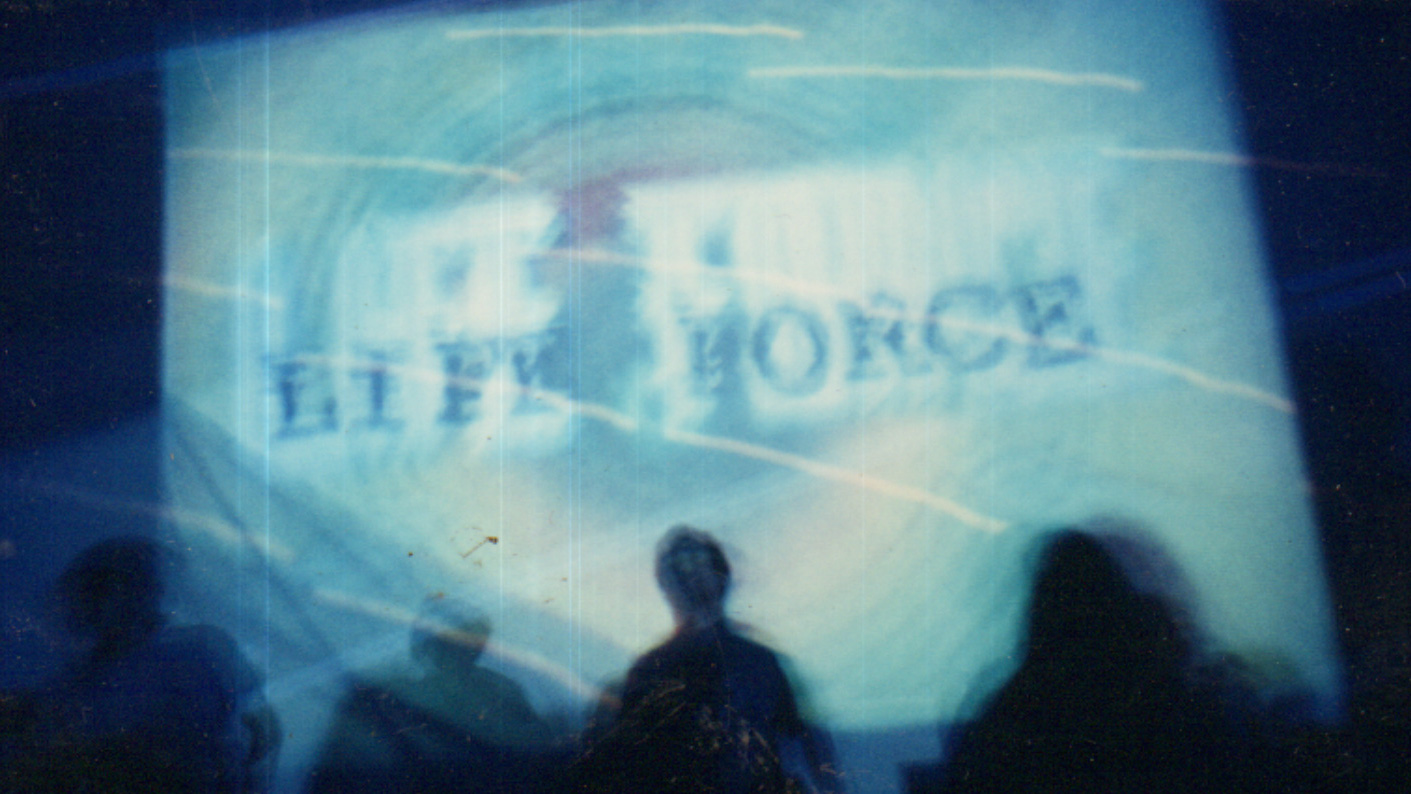
Of course Japan had a great club scene before I showed up. They were bringing out the bigger name US DJs regularly and were very influenced by the New York Garage scene. Larry Levan said it was his favourite place to spin outside of New York and he played his last ever gig in Japan at a legendary club called The Wall in Sapporo. Japan also had some fine resident DJs like EMMA at Tokyo’s club Gold and Yakko at The Wall, Sapporo. My first Japanese friend and roommate Hiroki Take, who I met at a record shop in London, used to describe Yakko as ‘My Master’ whilst recounting tales of the deepest House & Garage classics played on an incredible sound system.

But the club’s were mostly for Bad Boys and Cool Kids. A friend recently explained that we changed the landscape. Lifeforce put the ‘Party’ in the scene. Before people went clubbing now they go out and party. The story of Lifeforce also starts before my maiden voyage in 1993. I first met Massa when he came for a smoke with my other roommate Snowy in his house (that most people assumed was a squat) in Kentish Town.
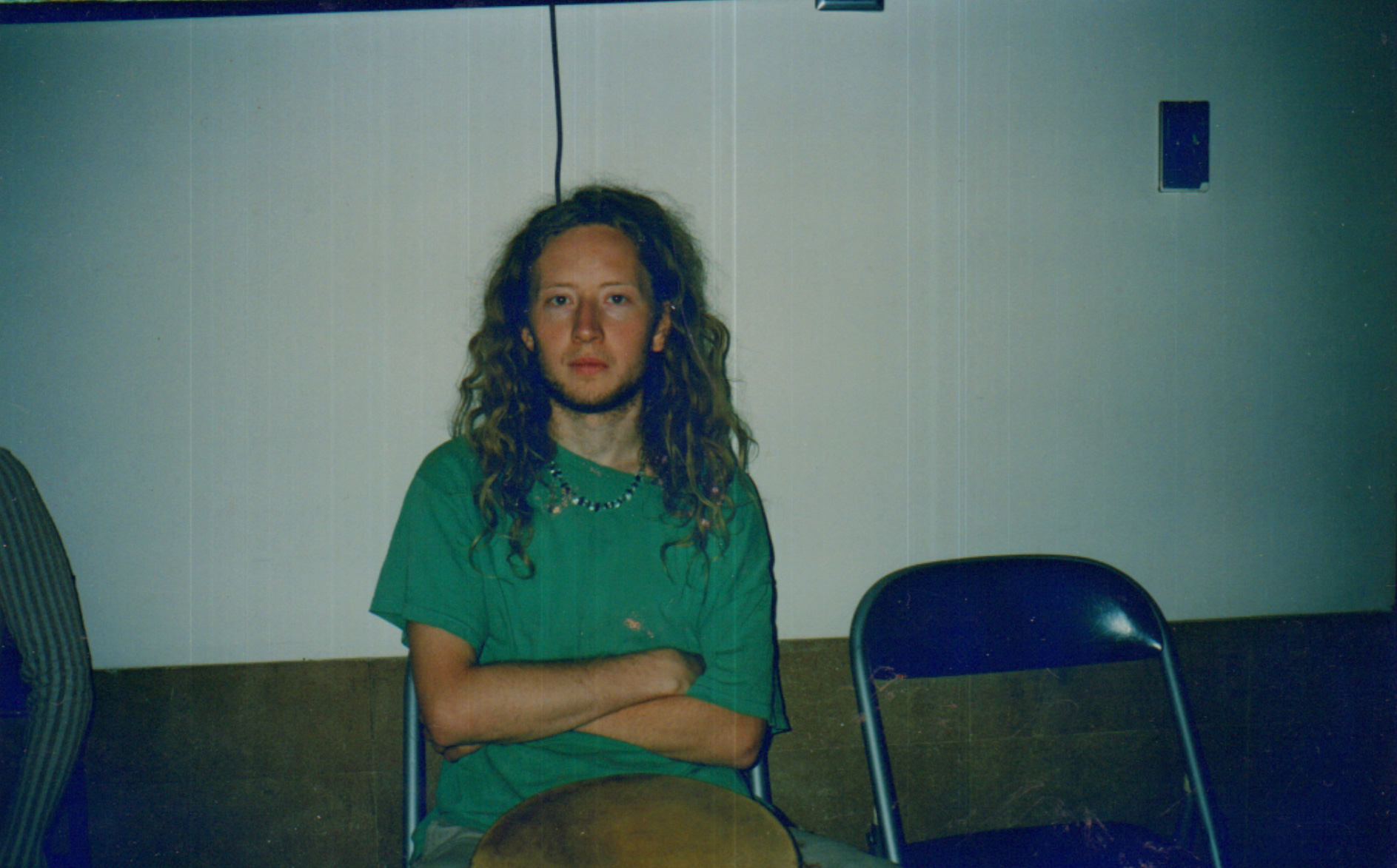
Massa heard me playing records in my room and would come in and share a smoke and some tunes. These sessions became more frequent and he started coming out to a few of the clubs and parties I was playing at in London - Quirky in Vauxhall or raves at the Cool Tan (a squatted dole office) in Brixton. Then he came further afield to many of the ‘Free Parties’ in fields I spun at most weekends during the summers of 1992/3. Massa was in his late thirties and lived with his English wife and their four kids in Wales.
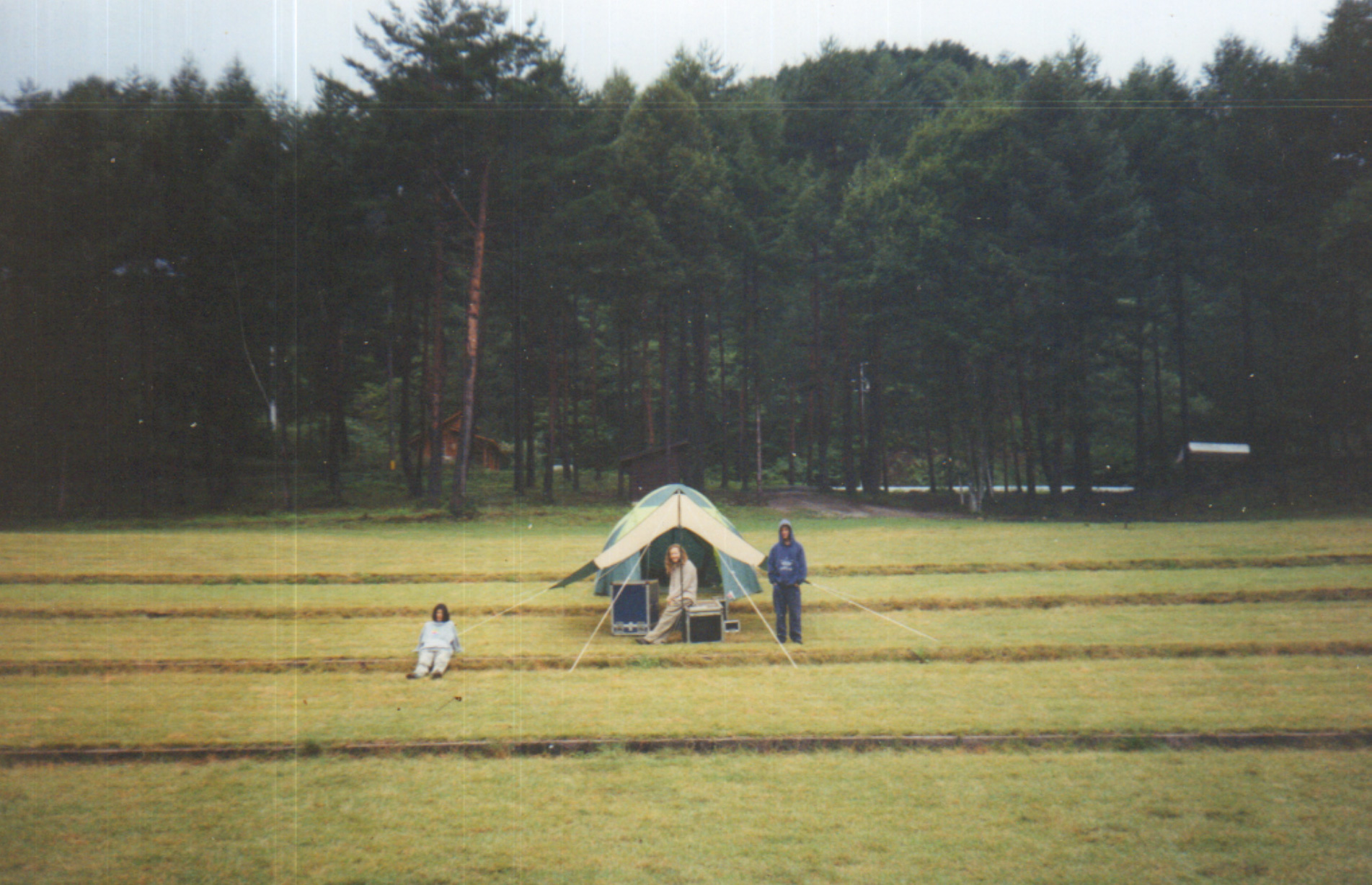
Massa had been going to some wild festivals in Wales and the West Country (playing Djembe along with Nik Turner of Hawkwind (who much later accompanied my DJ set on his saxophone one bizarre night in Tokyo). I guess Massa got his first taste of Rave on the Welsh festival circuit and when we met he took a real interest. I’ve always had an affinity with Japan, even as a boy I loved my Japanese toy soldiers and my favourite T-shirt was a ‘Rising Sun’ design with Kanji lettering. So when one day, as we sat in my smoke filled room, Massa sheepishly asked if I would like to come and DJ in Japan of course my answer was “YES!”.
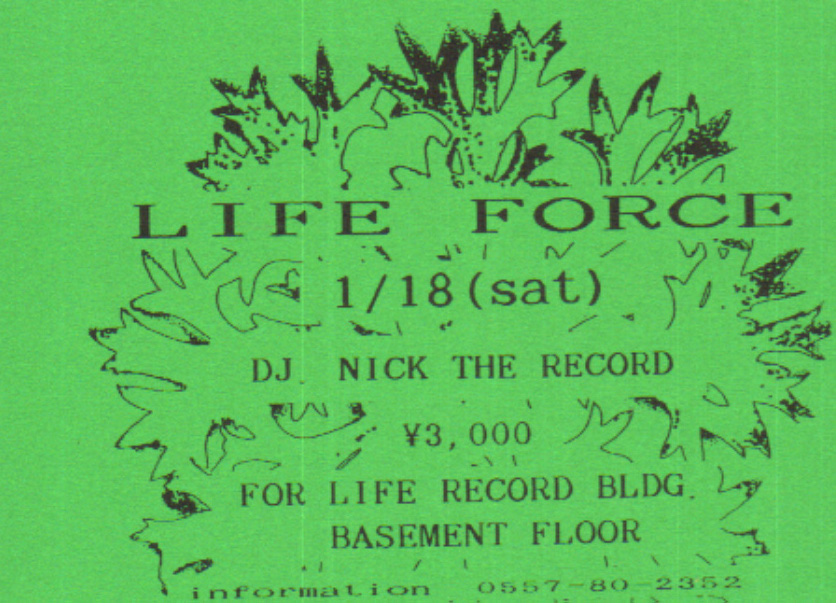
An equally important part of the puzzle are the sound men Yutaka Asada & Ono Shiro. Mr Asada started his sound engineering career in the 70s Rock generation. In 1988 he meet Mr Ono Shiro at the No Nukes festival in Tokyo and they became good friends in the early 90s visiting San Francisco to go hear The Grateful Dead. Shiro was the chief engineer at ON AIR Shibuya at this time, a live venue that also did occasional club nights. Mr Asada would often go and help out with the sound working together on Mad Professor, Lee Perry, Adrian Sherwood. Then in ‘92/’93 they did sound for Black Dog, Eatstatic, Orbital & System 7. At the same time some Japanese magazines started reporting the UK rave scene & the Criminal Justice Bill so their interest was piqued. Then in 1992 on a trip to see the Grateful Dead again in S.F. the Dead Heads headed to the Rave.
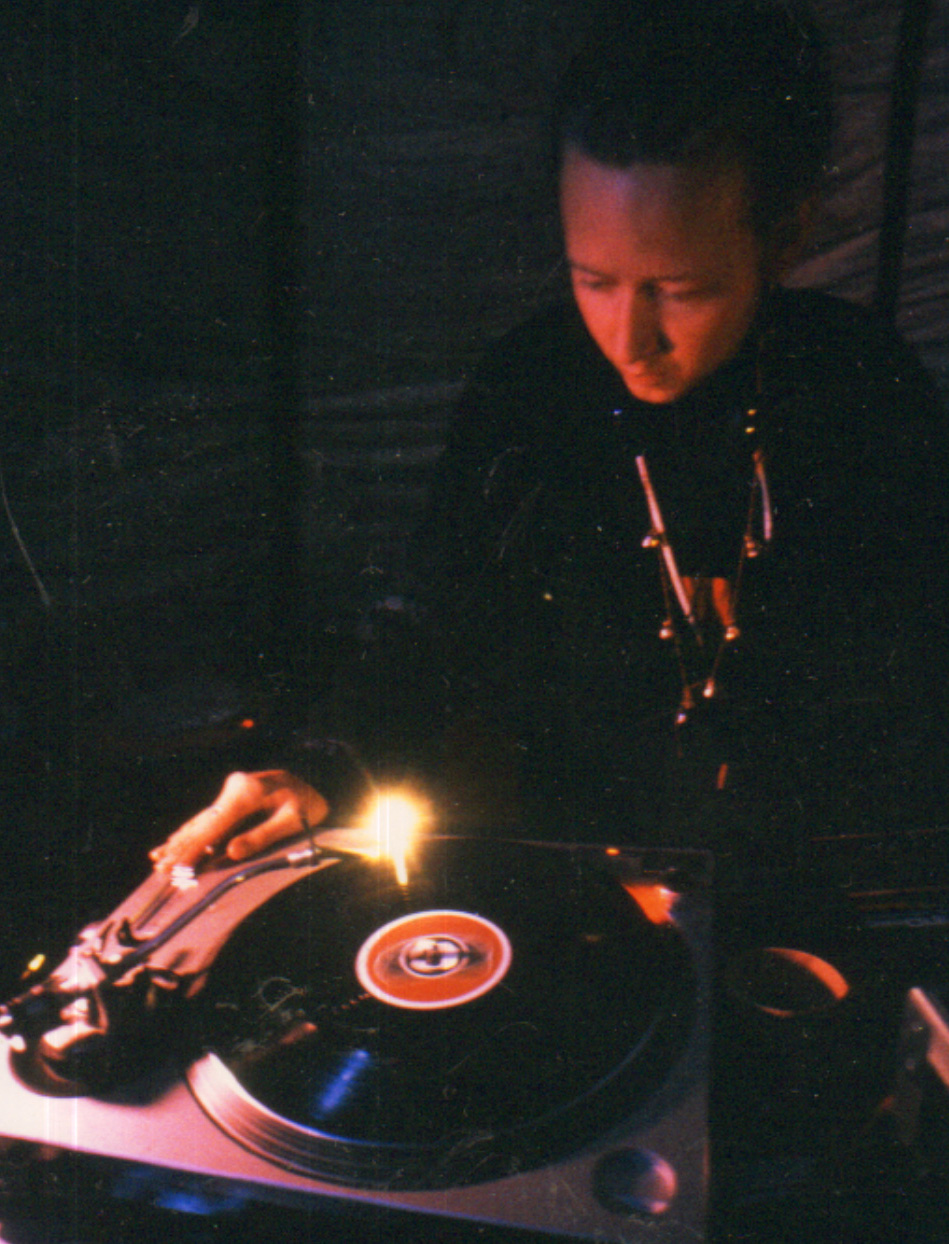
In the meantime Massa had been coming back to Japan and calling old friends suggesting they try to make a Rave in Japan. Most people couldn’t understand the concept but Shiro & Asada took to the idea. Massa told Shiro & Asada he had found a young talent and sent out a few of my mix tapes. Then in 1993 they set up the party and waited for me and Massa to come.
At first the reaction was mixed, as was the crowd. Quite a few old rockers and quite a lot of young people. Some from Tokyo, quite a lot from the countryside, particularly Shimoda in Izu, which was a bit of an alternative ‘Hippie’ town on the South Coast of Japan. A little like Brighton used to be back then. One guy seemed to like it a little too much. After the party myself and Darius went wandering and wondering around the forest for a few hours in our psychedelic state. We heard some shouting from afar but made light of it. When we went back to camp we heard there had been an accident but weren’t given much in the way of detail. It wasn’t until some years later that I was told the guy had slit his wrists because he had reached the most heavenly state of mind and wanted to stay there. Massa had apparently saved his life. I guess they didn’t tell us this until years later for fear it might scare us off doing more parties. On that first trip we also had a party in a studio in Izu and, I think, one in Tokyo too which soon became our spiritual home.
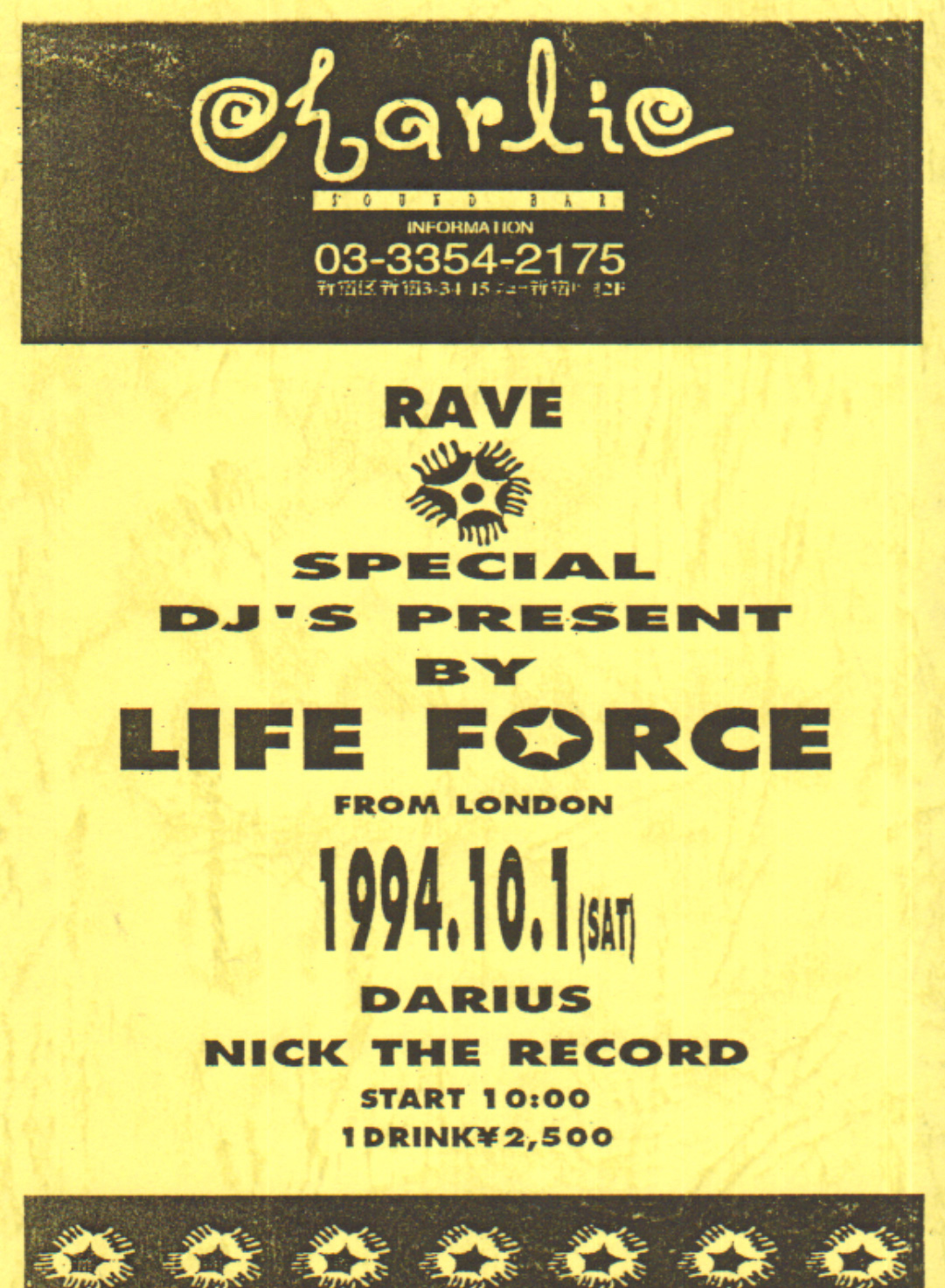
The scene grew slowly, a real word of mouth, grass roots type movement. They were careful about only letting good people know about the parties and creating an atmosphere where people could feel free to let loose. There was little in the way of advertising. Sometimes we’d leave flyers in record shops but they always seemed to disappear. They would collect addresses and send out a postcard with party info. It could be spontaneous, they would often get me over for two weeks to do a party each weekend then hear of another venue and ask me to stay on another week and just organise a third party that week.
Lifeforce was rarely held in clubs. If it wasn’t an outdoor event in the lush countryside or on a mountain top it was usually in a studio or event space. Lifeforce brought the sound, the visuals, the music and the people. The whole package. It really had the feel of being something unique. There was a collective of people who helped put the parties together, mostly unpaid, just happy to be involved in this special scene. Some people who heard about the scene from the outside talked about it like it was a cult. For those who were brave enough to give it a try it was magical.
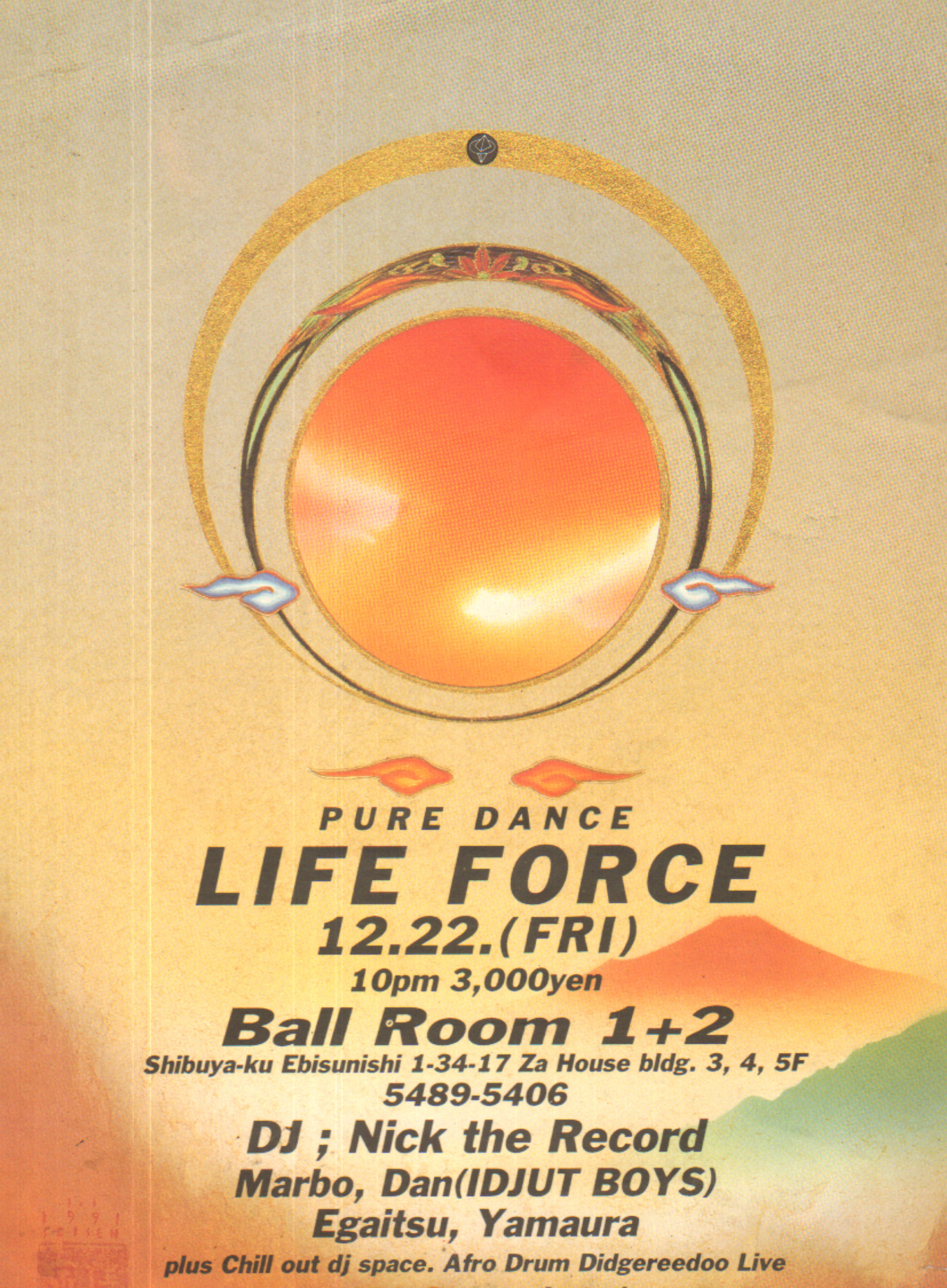
It resembled UK raves in many ways but one big difference was that unlike the UK scene there was very little in the way of drugs in Japan at that time. A few of the inner circle could get hold of some acid but apart from that very little, with almost no E back then. Not that it mattered. It was an all new experience and people really seemed to love it. They danced just as enthusiastically as any crowd back home. I say there wasn’t many drugs - Massa and friends loved to smoke. There wasn’t a lot around in Japan at the time but if there was any around Massa would sniff it out. He would change our plans and drive for two hours if he heard a friend was holding.
Lifeforce was not a money making venture at all in those early days. After paying for flights, DJs, sound system, lighting and venue there was little in the way of profit. In fact its more likely they were in the red. Massa had a knack of getting sponsorship. Never from companies, he was a rebel not a sell out, he would get friends to sponsor us. He was pretty good at spending other peoples money. Massa wasn’t in it for money, he was in it to build something special and for the Guru status. Yes, Massa loved the Guru status. If you looked from the outside you might wonder what it is he does exactly when everyone is running around pinning parachutes to the ceiling or taping cardboard over windows for makeshift soundproofing. Massa seemed to do little more than talk and smoke chillums, but he was an inspirer of men (and women), he could talk (and smoke) for days and he certainly knew what to say to get everyone motivated and captivated.
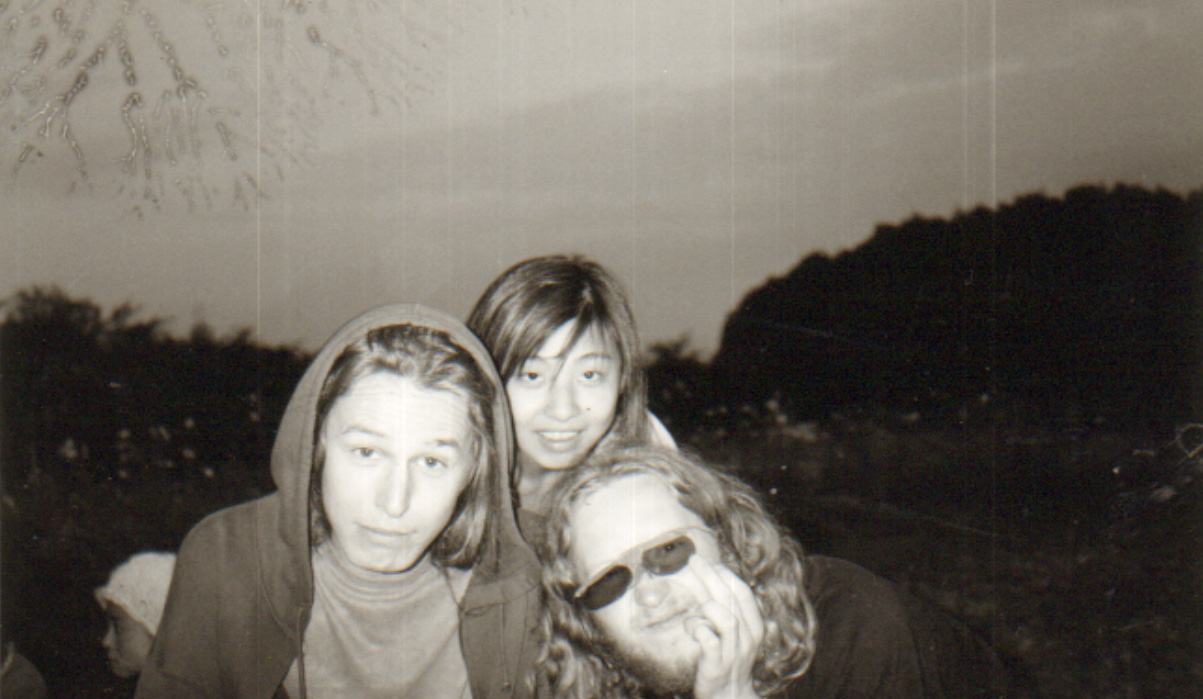
Other costs were kept low. We’d usually stay at friends houses, eat together, get stoned together and someone would always be getting a massage. The one club we did throw parties at in Shibuya was named FFD. The manager joined Lifeforce and a bunch of us would actually live there between gigs. It wasn’t all communal bliss though. Massa liked things done his way. It was his way or the highway. He’d speak really highly of all the crew, then I would come back three months later and ask where was that guy and he would say “That guy is totally out man” and they’d never be seen again.
My first trip to Japan coincided with a separation for Massa from his wife, he had left her back in England and took his two eldest kids with him. Sapphire and Nova, aged 6 and 8, were at all the early Lifeforce raves. They weren’t in school and his parenting style was that they were there to look after him more than he was there to look after them. He sent Nova back home after a while but Sapphire stayed with him in Japan. One minute she’d be playful and childlike, the next minute she’d be lighting your chillum. When Massa hooked up with Junco and had another kid, Junco stepped in and was a strong female role model for Sapphire, teaching her to read and write in Japanese. Sapphire is like a sister to me, she survived this crazy upbringing and is one of the most ‘together’ people I know. She is bilingual and has managed a Japanese restaurant in London, was the booking manager for club Amrax in Tokyo for three years and still handles my bookings in Japan.
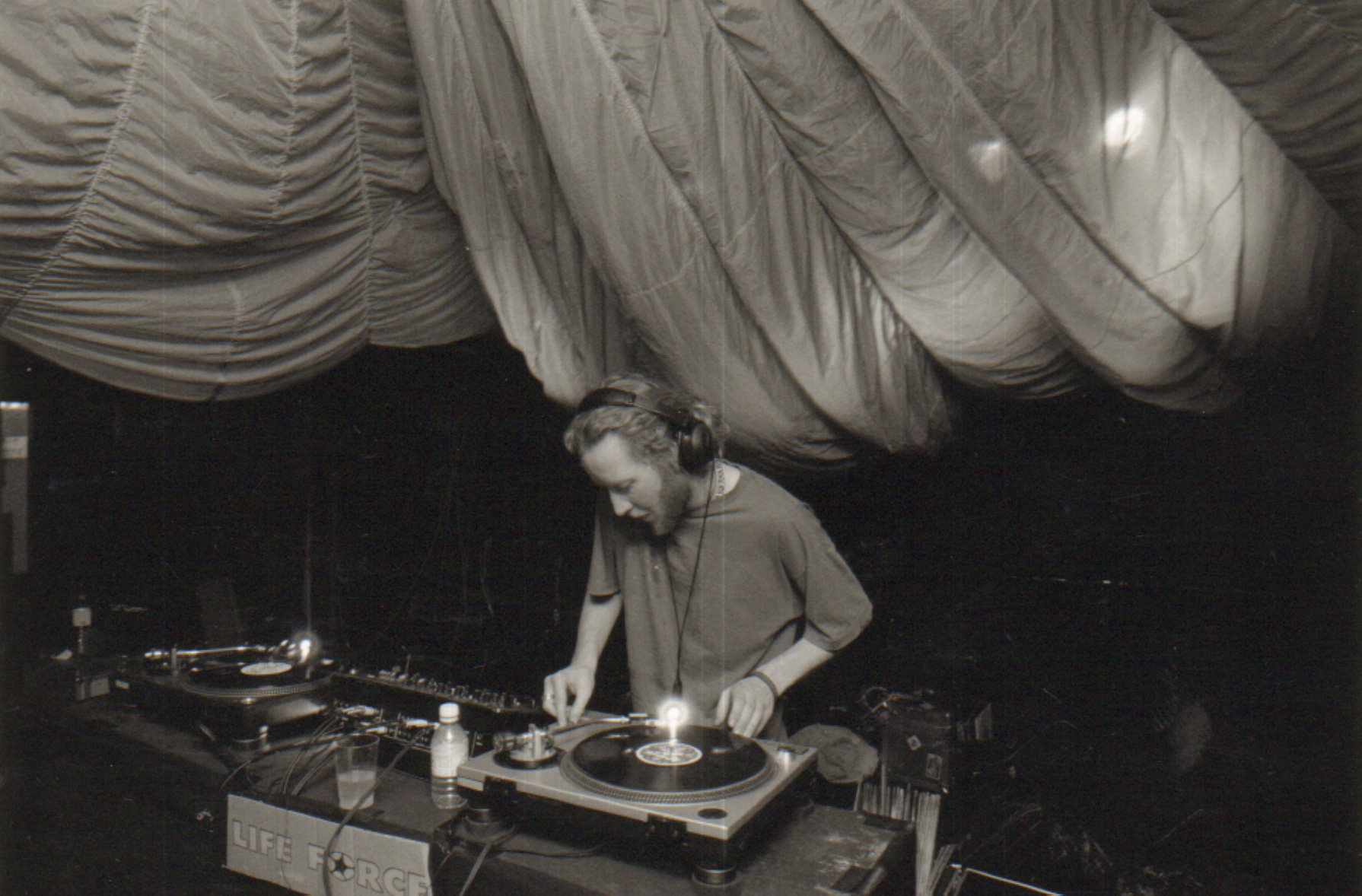
On some of the early trips quite a few of us went out there. There was myself and Darius to DJ, Paul Roggendorff did visuals, a girl called Louise who did visual art and Massa invited out his friend Tim Hutton who was a musician, but he didn’t bring any Instruments, he was basically there to get high on acid and dance all night. He was there to spread some good vibes. Well worth the price of a flight from London, if the ‘sponsor’ is paying. Later Tim came out with his then partner in Vulva to do a live gig. Later still, myself & Tim went on to make some fun music together for 20/20 Vision & Nuphonic.
For the first few trips out there I brought along my friend Darius to DJ with me. It was my hook up but it was an even playing field. We would generally play four hours each. If I played the coveted second set the first week then he would play the second set the next week. As it was a grass roots thing and our crowd wasn’t really coming from the club scene there was no need for name DJs and I usually preferred what my mates played over what most ‘Name’ DJs might play anyway. So I brought out Kenny Sunshine, Ed and Hamish from Mufflewuffle (a local club night in Brighton), James Glass from Cali. Some who were a little better known were Lee Insync & Lil Toni. Terre Thaemlitz played at one of our early parties. I also brought out a few people who are now better known for their first taste of Japan, like Dan Idjut, Foolish Felix Dickinson and Mad Matts.

After a while Massa noticed that the crowd actually preferred the nights where I played all night and that more people would actually come to gigs when only I played a ‘Long Set’ - eight hours or more. So I learned the art of the long set, sometimes playing much longer at the open air parties where we didn’t have to finish at seven or eight a.m. 16 hours is the longest I can remember. We made open air parties at least twice a year. We used all kinds of venues. But when we found a special spot called Karikogen we used it for about 6 years. It was a holiday camp and in September it was off season so we were able to use it. It was up a mountain but with a large flat grassy area. It was surrounded by snow capped mountains all around us. A truly inspirational place to party.
Eventually other organizers started to use it and the owners lost interest in having parties there as it started getting abused. Someone actually dug up an area of grass and poured in concrete so that they could have a flat DJ booth. Seems they missed the point of making a party in nature.
The music of Lifeforce has always been pretty varied. It was a Rave & it was dance music with around 70% House. Probably a bit more Acid & touching on techno in the early years. I love House but I was well into Disco and Jazz and tribal African stuff from way back, so I would throw something wild into the mix during the peak hours as well as starting the night with slower stuff & ending the night with ‘After Hours’ type of music. Just beautiful Soulful records of any genre. The crowd loved an encore, I always had to play at least three encores or they wouldn’t stop screaming. You’d hear anything from Joe Clausell or Blaze to Red Planet or Maurizio to Sun Palace or Connie Case.
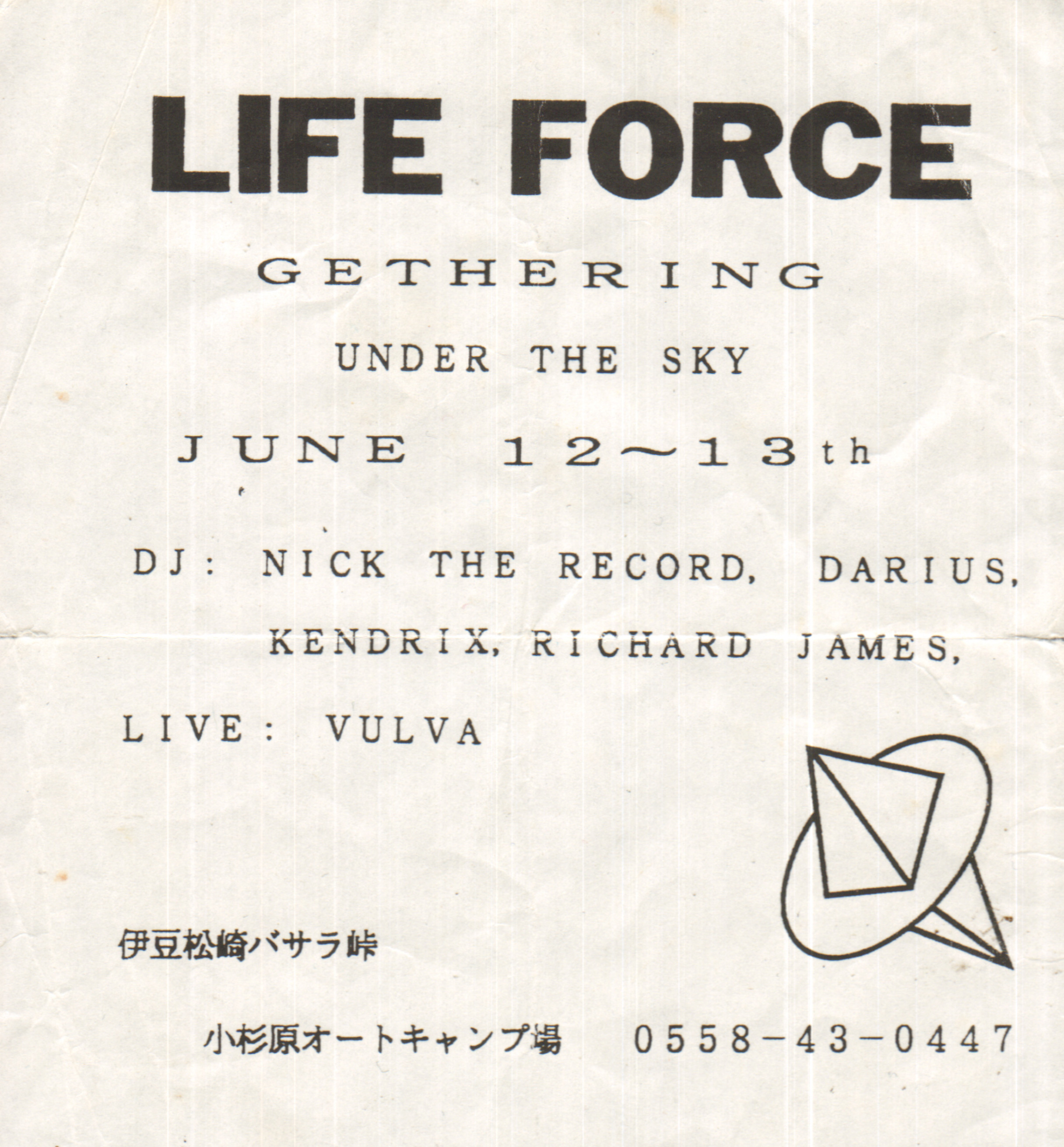
For the first 10 years Massa kept me on a very tight leash. The Japanese honour and code meant I shouldn’t play for anyone else except Lifeforce but finally after more than 10 years, money was maybe a little tighter and I guess it was harder to get the mostly Tokyo based Lifeforce crowd to come out to two or three parties in succession so I finally got to play in other cities at other peoples parties. There were still restrictions. I shouldn’t play more than four hours and they were very particular about who I could work with. I think they had to show Massa a whole lot of respect to get a look in.
I finally got to play in Saporro at Precious Hall which had taken over the reigns of The Wall, with it’s legendary custom made JBL system and Mago in Nagoya, whose sound design was built by our own Mr Asada. I remember a particularly wild, awesome party on New Years day with Eye from the band Boredoms in a huge disused basement of a cabaret/hostess club in Osaka. Over the last 11 years it’s been my honour to play all over Japan. As well as the hundreds of great parties and clubs I’ve been lucky enough to see the real Japan as a guest in peoples homes, cooking and eating together, going to ‘Onsen’ (hot spring) baths together and of course sharing music.
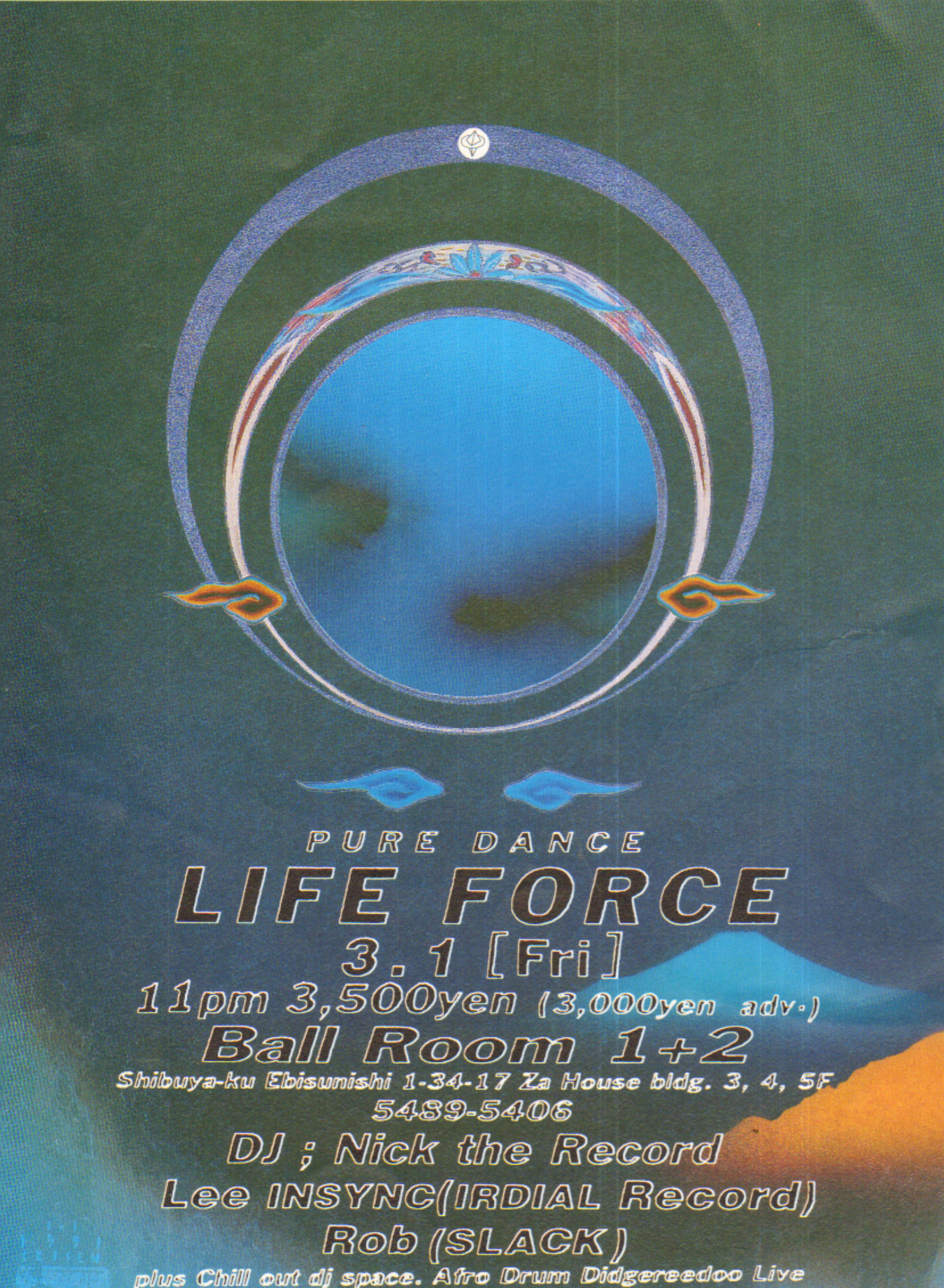
Japan is like a second home to me. I’ve never actually lived there but I have certainly clocked up some air miles getting there. I would guess I’ve DJ’d more parties there than I have in the UK and Europe over the years. I’m certainly guilty of not pushing too hard on my DJ career back home in England. I’m better known as a record dealer in the UK as that is my day job and my main source of income.
DJing for me was never a way to make a living. I started out unpaid on the ‘Free Party’ scene and at Tonka after parties on Brighton beach. I’ve always viewed it as more of a creative outlet. Its something I need to do. A communication I need to share with people and I got a supercharged dose every three months in Japan. That itch was getting scratched. The venues were always unique, the sound impeccable and the crowd wide open to whatever I dared to throw their way. The scene in Japan was also fresher and newer and was yet to get co-opted as was starting to happen back in the UK so you can understand my lack of drive to push as hard at home for a gig in a pub on some poor sound system with a limiter.
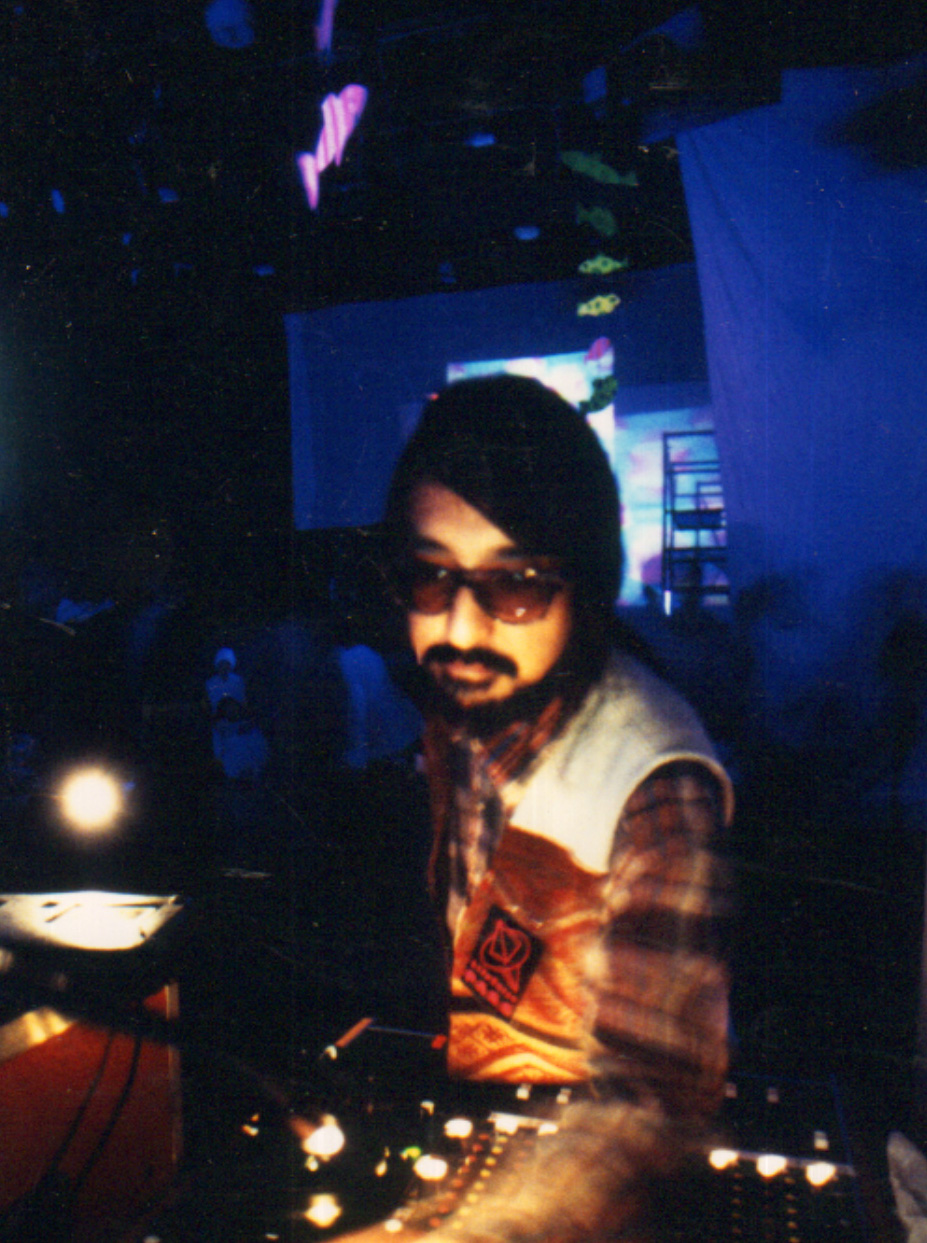
Like any inspiring movement, we had our copycats and we inspired many others to go on and make parties in our image. Many of the people involved in the scene today came out to Lifeforce for their early years of partying. One of the biggest underground music festivals Taico club, was hugely influenced by Lifeforce, and asked me to play their ‘After Hours’ closing set which I have done every year since they started up nine years ago.
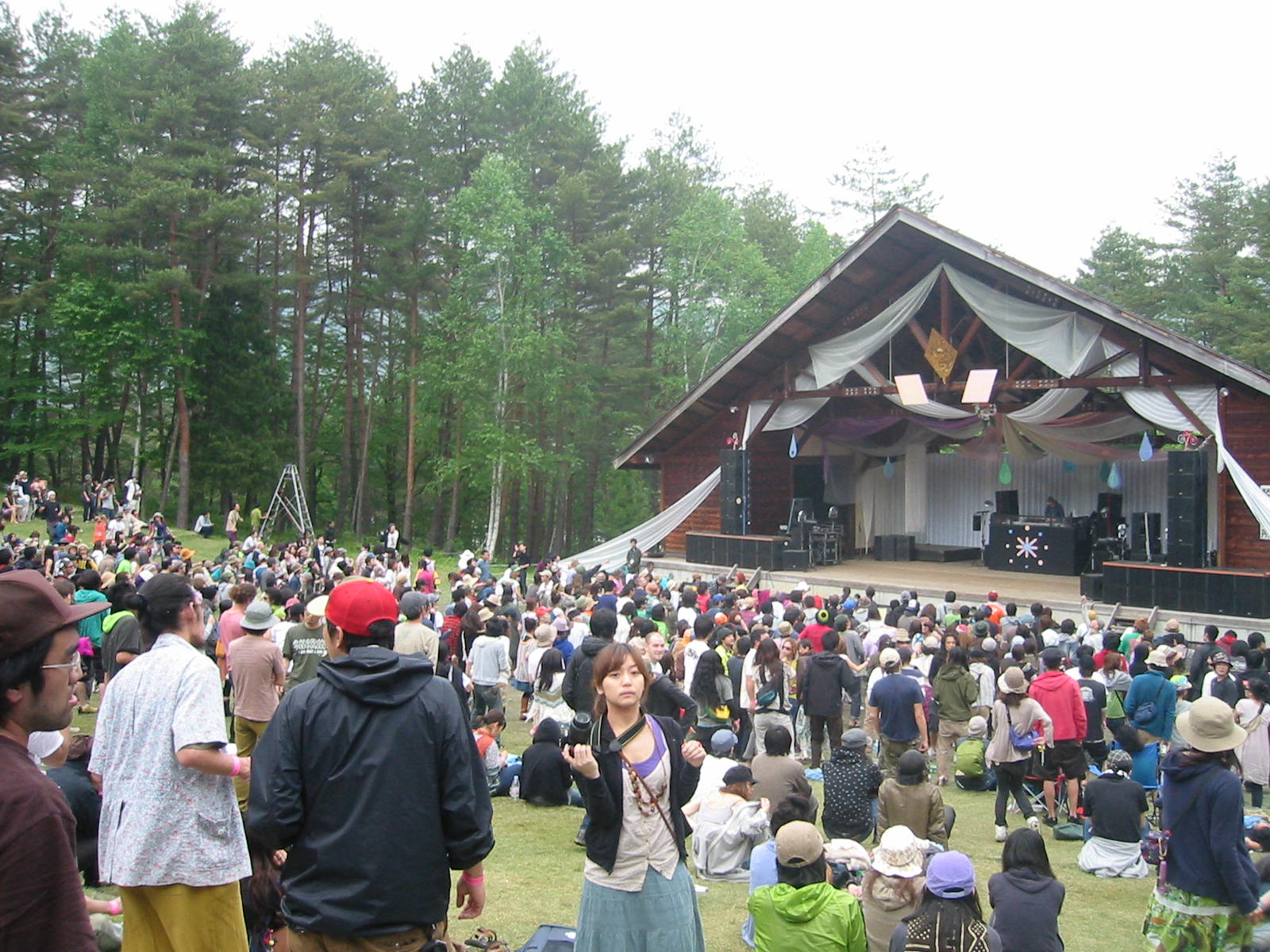
With a sorry heart I decided to part company with Lifeforce a couple of years ago. I didn’t quite make it to 20 years. It got a bit hard to work with Massa in recent times. We seemed to be looking in different directions and I had to call time on it. Lifeforce continues but they have gone in a different direction musically with younger, possibly fresher, DJ’s. Mr Asada is now probably the most sought after sound designer on the scene in Japan & I’m still an in-demand DJ over there and go back once or twice a year for Taico club and a tour of the underground clubs. Happy days.
To book Nick, find out more on him or see what he has for sale in his store head to the DJ Friendly Website. Nick plays at the Good Block New Years Eve party at The Montpelier in Peckham, London and you can get more information on that here.
